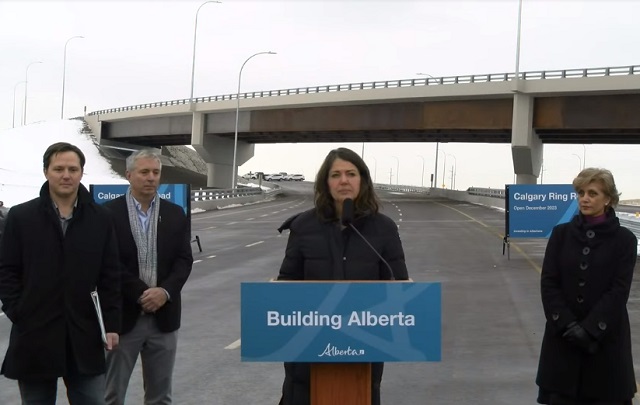Calgary
If I Wanted To Be a Dictator….

If I were the Prime Minister of Canada, I’d likely find the democratic process to be restrictive and cumbersome to my ambitions. No matter how beneficial my proposed policies, there would always be some half-wit squawking in opposition to implementing my vision of what Canada could, and should be.
If I were Canada’s PM, I might admire the efficiency of other Governments, and/or systems of Governance which allow their leaders to create the society they believe is best for them. A society of fairness and ecological responsibility is in the best interests of all Global citizens, and if the United Nations were in control of the world, all would benefit.
If my father was a Politician, and I grew up without ever having to worry about money, I might view small business owners as greedy little tyrants who exploit their staff by only offering minimum wage. I might believe that Capitalism is greatly flawed, and that individual freedoms obstruct my vision of what society should be. I might find a way to alter the system so that small businesses are run by the government, but without calling it fascism.
If my father was an admirer of the Communist Regimes, I might be influenced to share in his admiration.
If I wanted to be a dictator, I would have to either create an emergency, or I would have to be lucky enough to have an emergency occur during my reign as Prime Minister. Only with a national sense of emergency would the Canadian public allow me to expand my ministerial power. The greater the sense of fear felt by the public, the more accepting they will be of my expanding powers. Under the Emergency Measures Act, I would be able to achieve my goals.
If I wanted to be a dictator, I would relish the emergency and do everything I could to prolong the crisis for as long as possible. The longer the crisis lasts, the more my power could expand.
If I wanted to be a dictator, I’d have to “sell” the idea to people in such a way that they resist as little as possible. I would loudly condemn any criticism of authoritarian governments that are operating in a fashion that I would prefer to operate.
If I was determined to become a dictator, I would proclaim my moral superiority over my adversaries, so as to condemn any dissent as immoral.
I would place strong restrictions on social media and protests by limiting both free speech and the right of assembly. I would call these freedoms “Dangerous to the public good”.
I would implement new laws to limit liberties which I would call “temporary”, but in reality, they will be no more temporary than income tax was during its “temporary” implementation after World War 2.
At the earliest opportunity, I would seize as many firearms as possible from the public, so as to minimize the possibility of armed resistance. I would find a way to make the seizure of arms appear to be in their best interests.
If I was determined to be a dictator, much of the public would need to be on my side. To that end, I would provide government funding for them which circumstance would force them to accept. After just a few months, they would become dependent on the Government relief funding. The more dependent they become, the more compliant they will be. The more compliant they are, the more my power can expand. Love me, or hate me, they won’t want to risk losing the funding which allows them to survive.
If I were to be a dictator, I would hire a tech firm to mine the internet for data that would identify potential resistors. The list would reveal both those with the most influence, and those who could lead an armed resistance. I would start by monitoring all Army veterans, especially those with combat experience who are the most outspoken.
I would create as much tension and civil unrest as possible, so as to foster a volatile social environment. The more volatile, the more likely it would be for a “trigger event” to happen. Once a trigger event occurs, such as an armed response, or a violent protest, then I would have the excuse I would need to implement martial law. Under martial law, I would have all the tools I required to institute a permanent dictatorship.
To maintain my power, I would have a zero-tolerance policy for any and all dissent. Anyone who would question my authority would be immediately labelled as conspiracy theorists, arrested, and jailed for “subversive activity.” Only with absolute control over the masses, would I be able to re-create our entire society into what I know to be “the right way”.
Our Prime Minister, Justin Trudeau, and other world leaders are currently on the path to absolute power. Now is the time to ask ourselves, …are we OK with this? If not, what are we prepared to do so that we can avoid this dark potential future?
Mark E. Meincke
Buy the Home Seller’s Bible by clicking HERE
Buy “Why not Me?” HERE
For more stories, visit Todayville Calgary
Alberta
Building a 21st century transit system for Calgary

From the Frontier Centre for Public Policy
Calgary Transit is mired in the past, building an obsolete transit system designed for an archaic view of a city. Before the pandemic, transit carried 45 percent of downtown Calgary employees to work, but less than 10 percent of workers in the rest of the Calgary urban area, showing that Calgary Transit doesn’t really serve all of Calgary; it mainly serves downtown.
That would have worked in 1909, when Calgary’s first electric streetcars began operating and most jobs were downtown. By 2016, less than 15 percent of Calgary jobs were downtown, and the pandemic has reduced that number further.
Rather than design a transit system that serves the entire urban area, Calgary Transit light-rail system reinforced its downtown focus. Transit ridership has grown since the city’s first light-rail line opened in 1981, but it was growing faster before the light rail began operating than it has since then. Now Calgary Transit is planning even more downtown-oriented light-rail lines.
Light rail is an expensive form of low-capacity transit. The word “light” in light rail refers not to weight but to capacity: the American Public Transportation Association’s transit glossary defines light rail as “an electric railway with a ‘light volume’ traffic capacity.” While a light-rail train can hold a lot of people, for safety reasons a single light-rail line can move no more than about 20 trains per hour in each direction.
By comparison, Portland, Oregon runs 160 buses per hour down certain city streets. An Istanbul busway moves more than 250 buses per hour. Bogota Columbia busways move 350 buses per hour. All these transitways cost far less per mile than light rail yet can move more people per hour.
Once they leave a busway, buses can go on any city street, reaching far more destinations than rail. If a bus breaks down or a street is closed for some reason, other buses can find detours while a single light-rail breakdown can jam up an entire rail line. If transportation patterns change because of a pandemic, the opening of a new economic center, or the decline of an existing center, bus routes can change overnight while rail routes take years and cost hundreds of millions of dollars to change.
To truly serve the entire region, Calgary Transit must recognize that buses are faster, more flexible, and can move more people per hour to more destinations at a lower cost than any rail system. It should also recognize that modern urban areas have many economic centers and use buses to serve all those centers.
Besides downtown, Calgary’s major economic centers—the airport, the University of Calgary, Chinook Center, the Seton health center, and others—are mostly located near freeway on- and off-ramps. Calgary Transit should identify ten or so such centers geographically distributed around the region. It should locate transit centers—which need be no more than curbside parking reserved for buses with some modest bus shelters—near the freeway exchanges closest to each center.
It should then operate frequent (up to five times per hour) non-stop buses from every center to every other center. A few secondary transit centers might have non-stop buses operate to just two or three other centers. Local bus routes should radiate away from each center to serve every neighborhood of the Calgary urban area.
Since non-stop buses will operate at freeway speeds, the average speed of this bus system will be more than double the average speed of Calgary’s current bus-and-rail system. Transit riders will be able to get from any corner of the urban area to any other part of the urban area at speeds competitive with driving.
Such a polycentric system will serve a much higher percentage of the region’s workers and other travelers than the current monocentric system yet cost no more to operate. It will cost far less to build than a single rail line since most of the necessary infrastructure already exists. While some may worry that buses will get caught in congestion, the solution is to fix congestion for everyone, not spend billions on a slow rail system that only serves a few people in the region.
It is time for Calgary Transit to enter the 21st century. A polycentric bus system may be the best way to do it.
Randal O’Toole is a transportation policy analyst and author of Building 21st Century Transit Systems for Canadian Cities.
Alberta
Calgary Ring Road opens 10 months early

Christmas comes early for Calgary drivers
The Calgary Ring Road is now ready to be opened to public traffic, several months ahead of schedule.
Calgary’s ring road is one of the largest infrastructure undertakings in Calgary’s history and includes 197 new bridges and 48 interchanges. The 101-kilometre free-flowing Calgary Ring Road will open to traffic Dec. 19, completing a project decades in the making.
“Calgary’s ring road is a project that has been decades in the making and its completion is a real cause for celebration. This has been an important project and our government got it done. With this final section completed, travelling just got a little easier for families and for workers. This will not only benefit Calgarians and residents in the metro region, it will provide a boost to our economy, as goods can be transported more easily across our province.”
Although construction of the entire ring road project began in 1999 under former premier Ralph Klein, discussions on a ring road around the City of Calgary began as early as the 1950s. In the late 1970s, under former premier Peter Lougheed, high-level planning and land acquisition started and a transportation utility corridor was established to make the Calgary Ring Road a reality.
“The final section of the Calgary Ring Road is now complete, and I’d like to acknowledge the work done by former premiers and transportation ministers and their vision to build Alberta. I’m proud to announce that the final section was completed on budget and months ahead of schedule.”
“I’m thrilled to see the Calgary Ring Road project completed. It was something I have helped shepherd through the process since 2014. Finally, all the hard work put in by everyone has become a reality. The Calgary Ring Road will provide travellers with over 100 kilometres of free-flow travel, create new travel options for the City of Calgary and surrounding area and provide improved market access across the region.”
Opening the ring road means new travel options for Calgarians, which will draw traffic away from heavily travelled and congested roads such as the Deerfoot Trail, 16th Avenue, Glenmore Trail and Sarcee Trail. For commercial carriers, the ring road provides an efficient bypass route, saving time and money for the delivery and shipment of goods and services.
“The ring road investment generated thousands of local jobs and will now play an integral role in keeping Calgarians and the economy moving. This important transportation link will ease congestion on city routes and greatly improve connectivity and access for businesses transporting goods.”
The ring road is a critical component to growing economic corridors in Alberta and Western Canada, as it connects the Trans-Canada Highway to the east and west, and the Queen Elizabeth II Highway and Highway 2 to the north and south. It is also part of the CANAMEX corridor, which connects Alberta to the highway network in the United States and Mexico.
The completion of the ring road is a major boost for Calgary, opening new business opportunities and supporting key components of the Calgary economy. It sends a signal to businesses and investors that Calgary has a strong highway infrastructure, providing economic corridor connections through the entire region.
“With one of the smoothest commutes in Canada and the capacity to reach 16 million customers by road within a single day, Calgary offers unmatched quality of life and economic opportunities. The triumphant completion of the Calgary Ring Road further improves our capacity to attract even more companies, capital and talent to our city.”
“This is an exciting step forward for the Calgary Metropolitan Region. This key artery will not only improve the quality of life for the residents of the region, it is also a key economic enabler and we are thrilled to see its completion.”
Quick facts
- Stretched into a single lane, the highway is 1,304 kilometres long, the distance from Calgary to Winnipeg.
- Other sections opened in 2009, 2013, 2020 and 2023.
- The West Calgary Ring Road is the final piece of the ring road project.
-

 Censorship Industrial Complex2 days ago
Censorship Industrial Complex2 days agoDesperate Liberals move to stop MPs from calling Trudeau ‘corrupt’
-

 Business2 days ago
Business2 days agoFederal government’s ‘fudget budget’ relies on fanciful assumptions of productivity growth
-

 Health1 day ago
Health1 day agoTransgender activists are threatening the author of scathing UK report on child ‘sex changes’
-

 conflict1 day ago
conflict1 day agoCol. Douglas Macgregor torches Trump over support for bill funding wars in Ukraine and Israel
-

 COVID-192 days ago
COVID-192 days agoInquiry shows Canadian gov’t agencies have spent $10 million on social media ads for COVID jabs
-

 Alberta22 hours ago
Alberta22 hours agoRed Deer Doctor critical of Alberta’s COVID response to submit report to Danielle Smith this May
-

 Alberta1 day ago
Alberta1 day agoAlberta’s baby name superstar steals the show again
-

 Censorship Industrial Complex1 day ago
Censorship Industrial Complex1 day agoNow We Are Supposed to Cheer Government Surveillance?








